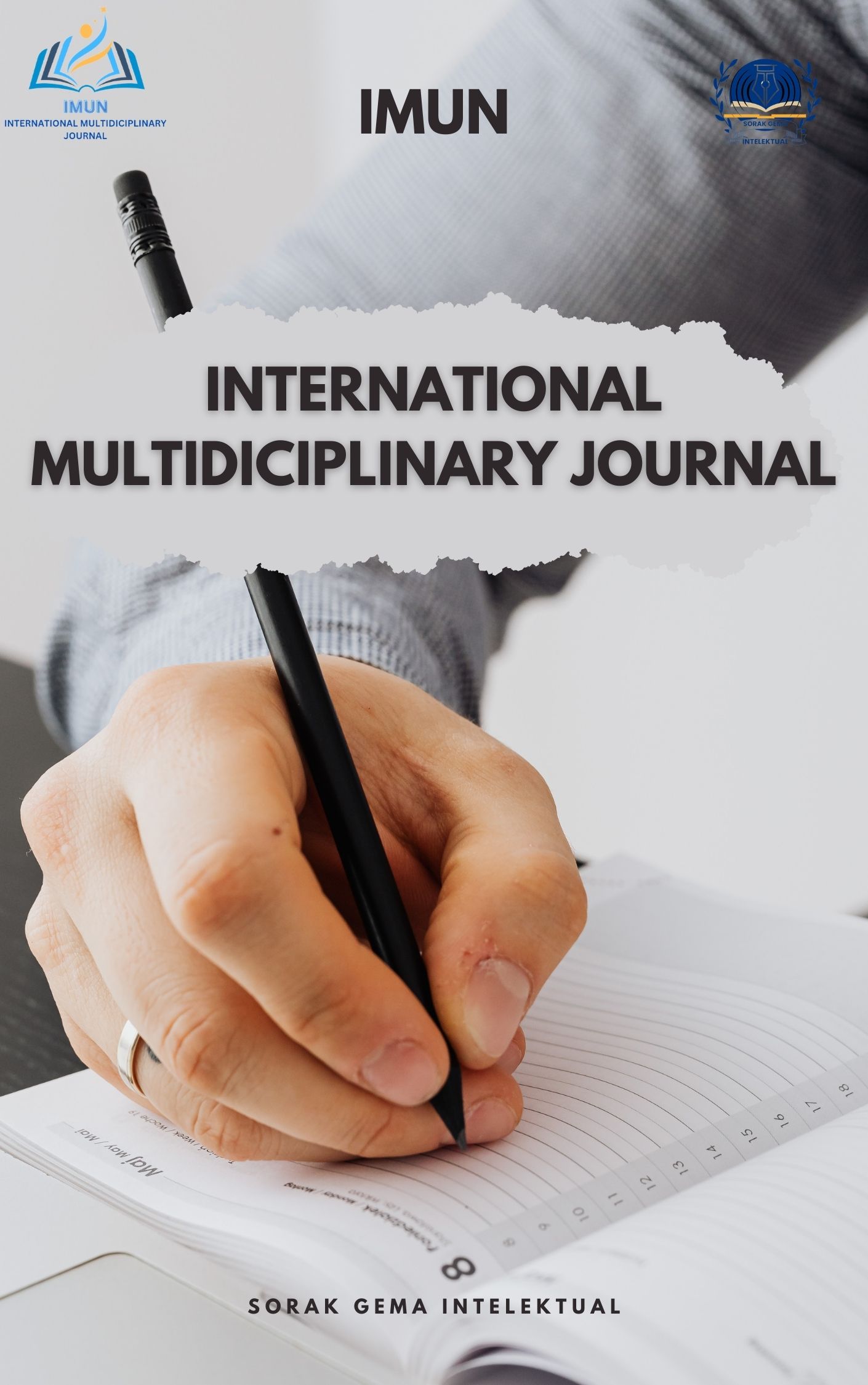The Relationship Between Customer Relationship Management (CRM) and Consumer Satisfaction at Hotel Puri Insan Asih (PIA) Pandan
Keywords:
Customer Relationship Management, Consumer SatisfactionAbstract
This study aims to examine whether there is a relationship between Customer Relations Management (CRM) and consumer satisfaction at the Puri Insan Asih (PIA) Pandan Hotel. To address this issue, a qualitative descriptive research design and quantitative analysis were used. The population of this study consists of all employees at the Puri Insan Asih (PIA) Pandan Hotel, totaling 71 individuals. Since the population is fewer than 100 people, the entire population of 71 individuals was taken as the sample. In addition to determining the sample or respondents, research informants were also selected, specifically the leadership elements within the organization. The research findings indicate that there is a relationship between Customer Relations Management (CRM) and consumer satisfaction at the Puri Insan Asih (PIA) Pandan Hotel. To verify the relationship and the influence between variables X and Y, several statistical tests were conducted. The correlation result showed a very strong correlation, with a value of 0.746. To examine the effect, the coefficient of determination was calculated to be 55.6%, which indicates that the independent variable (Customer Relations Management) influences consumer satisfaction, while the remaining 44.4% is influenced by other variables not discussed in this study, such as human resources quality, facility and infrastructure completeness, employee performance, and others. Based on the simple linear regression model, the regression equation Y = 13.250 + 0.715 (Customer Relations Management) indicates that a certain increase in the X variable (CRM) will lead to an increase in the Y variable (consumer satisfaction) multiplied by the given coefficient value. From the hypothesis test, the calculated t-value was greater than the t-table value (7.335 > 1.995), leading to the acceptance of the alternative hypothesis (Ha), meaning that the hypothesis proposed in Chapter I is supported.
References
Agustiyadi Tri, 2008 Customer Relationship Management. Malang : Bayu Media.
Alkindi, 2010. Bekerja Sebagai Ibadah. Solo: CV Aneka.
Arikunto, Suharsimi. 2009. Prosedur Penelitian Suatu pendekatan praktek. Jakarta : Rineka Cipta.
Aziz Abdul, 2013. Etika Bisnis Perspektif Islam, Bandung : Alfabeta.
Azwar. Ahmad. 2007. Metode penelitian. Jakarta : Raja Grafindo P.arsada.
Buttle, Francis. 2006. Manajemen Pemasaran Jasa. Salemba Empat. Jakarta
Dantes Nyoman. 2012. Metode penelitian. Yogyakarta : Andi Offset.
Gaffar. 2007. Pengantar Bisnis, Liberty, Yogyakarta Gaffar. 2007. Pengantar Bisnis, Liberty, Yogyakarta
Irawan Handy. 2008, 10 Prinsip Kepuasan Pelanggan. Jakarta : Elex Media Komputindo.
Jumadi. 2010. Desain Penelitian MSDM dan Perilaku Karyawan Paradigma Positivistik dan Berbasis Pemecahan Masalah, Jakarta : PT RajaGrafindo Persada.
Kartajaya Hermawan. 2010. Syariah Marketing. Bandung : PT Mizan Pustaka.
Kotler Philip. 2008. Manajemen Pemasaran, edisi 12, cetakan pertama, Jilid I dan II, terjemahan Hendra Teguh, , Jakarta : PT. Erlangga.
Kotler, Amstrong . 2008. Principles Of Marketing. Edisi13. Alih Bahasa oleh Benyamin Molan Jakarta : PT Indeks.
Lukas. 2012. Pemasaran Strategik, Yogyakarta : Andi,
Mokodongan. 2010. Paradigma Baru Manajemen Sumber Daya Manusia, Penerbit Amara Book, Yogyakarta
Porter. 2002. Kiat meningkatkan Produktivitas Kerja, Rineka Cipta. Jakarta
Rahmayanti Nina. 2010. Dasar-Dasar Pemasaran. Jakarta : Raja Grafindo Persada.
Rangkuti. 2008. Etika Customer Service, Jakarta : Raja Grafindo Persada
Sangadji dan Sopiah. 2010. Metodologi Penelitian (Pendekatan Praktis Dalam Penelitian), Yogyakarta : Andi Offset.
Situmorang, dan Lufti., 2012, Analisis Data Penelitian (Menggunakan Program SPSS), Medan : USU Press
Stanton William. 2011. Bauran Pemasaran, Edisi VII, Jilid ke-2, Jakarta : Erlangga
STIE Al - Washliyah Sibolga / Tapanuli Tengah, 2020, Pedoman Penulisan dan Penyusunan Skripsi / Laporan Penelitian . Sibolga : STIE Al- Washliyah Sibolga/ Tapanuli Tengah.
Stoner. 2013. Customer Relationship Management, Konsep dan Kasus, Jakarta : Harvarindo.
Sugiyono. 2010. Metode Penelitian. Bandung : Alfabeta.
----------- 2012, Metode Penelitian Bisnis, cetakan ke enam belas, Bandung : Alfabeta
Sukmadinata. 2006. Landasan Psiklogi Proses Pendidikan. Bandung : Remaja Rosda Karya.
Tjiptono, Fandy, 2009, Strategi Pemasaran, Malang : Bayu Media.
Tunggal Amin Widjaja 2008. Pengantar Konsep Nilai Tambah Ekonomi (EVA) dan Value Based Management (VBM). Harvarindo.
Umar Husein. 2005 Metode Penelitian. Jakarta : Salemba Empat.
Downloads
Published
Issue
Section
License
Copyright (c) 2024 Sriayu Aritha Panggabean, Andrian Irsyan , Azriadi Tanjung , Mhd. Shafwan Koto, Riwayani (Author)

This work is licensed under a Creative Commons Attribution 4.0 International License.
You are free to:
Share — copy and redistribute the material in any medium or format for any purpose, even commercially.
Adapt — remix, transform, and build upon the material for any purpose, even commercially.
The licensor cannot revoke these freedoms as long as you follow the license terms.
Under the following terms:
Attribution — You must give appropriate credit , provide a link to the license, and indicate if changes were made . You may do so in any reasonable manner, but not in any way that suggests the licensor endorses you or your use.
No additional restrictions — You may not apply legal terms or technological measures that legally restrict others from doing anything the license permits.
Notices:
You do not have to comply with the license for elements of the material in the public domain or where your use is permitted by an applicable exception or limitation .
No warranties are given. The license may not give you all of the permissions necessary for your intended use. For example, other rights such as publicity, privacy, or moral rights may limit how you use the material.



